How To Run Terminal On Windows 10
Windows Terminal is Microsoft's combined replacement for the command line and Windows PowerShell, letting you run more powerful administrative commands and tools on Windows than you'd otherwise able to use from a graphical user interface.
Rather than switch from one tool to another, the new Windows Concluding brings these tools together. You can run Windows fustigate scripts, connect to Azure virtual machines, and open a Windows Subsystem for Linux final—all inside a unmarried window.

Installing The New Windows Terminal
The new Windows Terminal app is still in agile development. Rather than test it internally, Microsoft has made a "preview" release available every bit a download in the Microsoft Store.
It brings support for tabbed windows, improved text display, and advanced configuration, letting you customize private user profiles for your various apps. It'south also open up-source, meaning yous tin can poke effectually and contribute to the project yourself.
Y'all can also download and compile the latest release yourself from the Github repository. For the all-time gamble of stability, still, it'south best to employ Microsoft'southward pre-congenital version. It'due south still in testing, so you may nevertheless experience some bugs during use.
- To start, head to the Windows Last (Preview) listing on the Microsoft Store website, so click Get. If you're using Chrome, allow it to open the Microsoft Store by clicking the Open up Microsoft Store push button in the popular-upward dialog box. Alternatively, search for Windows Final in the Microsoft Store app directly.
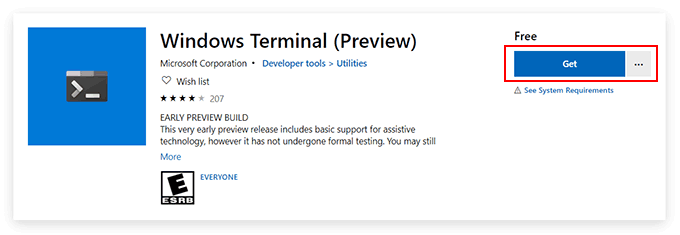
- Follow the same instructions equally in a higher place in the Microsoft Store app. Click Get to link the app to your Microsoft account, then Install to begin the installation.
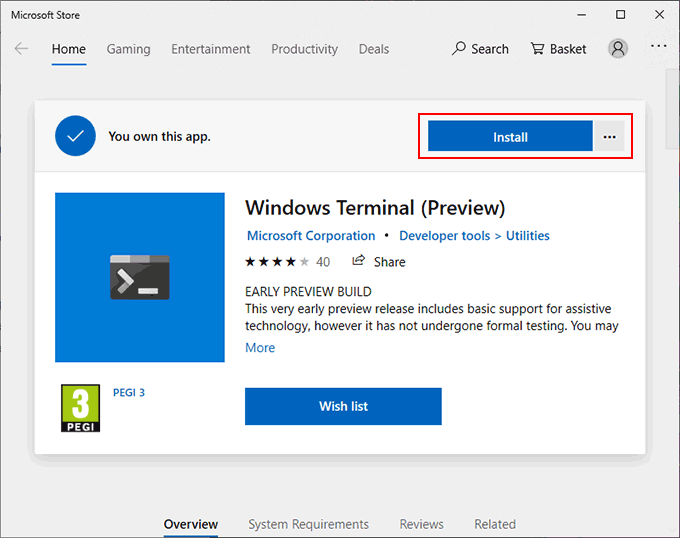
- Once installed, click Launch, or admission it from your Windows Start menu.

Using The New Windows Final
The interface to the New Windows Final app is incredibly elementary. By default, it'll look a lot like a typical Windows PowerShell window.
That's because, by default, the first tab it opens will exist a PowerShell terminal. You can utilise Windows PowerShell to perform organisation administration tasks, with the added reward that yous can open up multiple PowerShell tabs in a single window.
This is the existent do good of New Windows Terminal, allowing y'all to switch between dissimilar apps and terminal shells within the same window. Yous can open an old-school command line in a second Windows Terminal tab, likewise as an Azure Cloud Beat to remotely manage your Microsoft Azure virtual machines.
If you have a Windows Subsystem for Linux distributions installed, these will be displayed, too, giving you lot easy access to a Linux final in Windows.
- To open a new PowerShell window, click the plus button to the right of your concluding tab. To open other types of tabs, click the downwards arrow push button and select one from the list of available options.
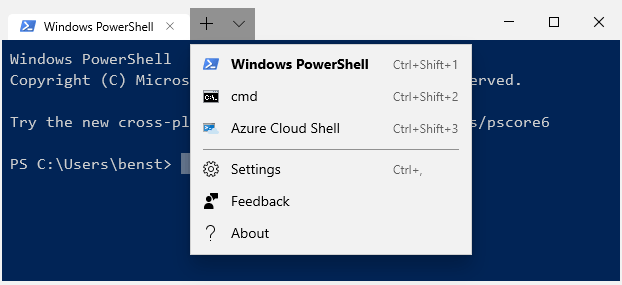
Preparing To Configure Windows Terminal
The new Windows Final is extremely customizable. You lot tin change its appearance, including modifying the background, text color and font. Microsoft also includes pre-set themes for y'all to switch to, just yous can create your ain using the JSON configuration file.
Y'all tin can create custom settings for each of the types of terminals and apps that the Windows Last supports.
- You can edit a JSON file using Notepad, but it'southward best to use a third-party Windows app chosen Notepad++, which offers better formatting for JSON files, making it easier to edit. Download and install Notepad++ before you begin.
With Notepad++ installed, you'll need to configure Windows to open JSON files using information technology.
- Head to your default Windows Terminal settings binder. Open up Windows File Explorer, then blazon %LOCALAPPDATA%\Packages\Microsoft.WindowsTerminal_8wekyb3d8bbwe\LocalState. The folder should accept a profiles.json file. Correct-click the file, then click Open with.
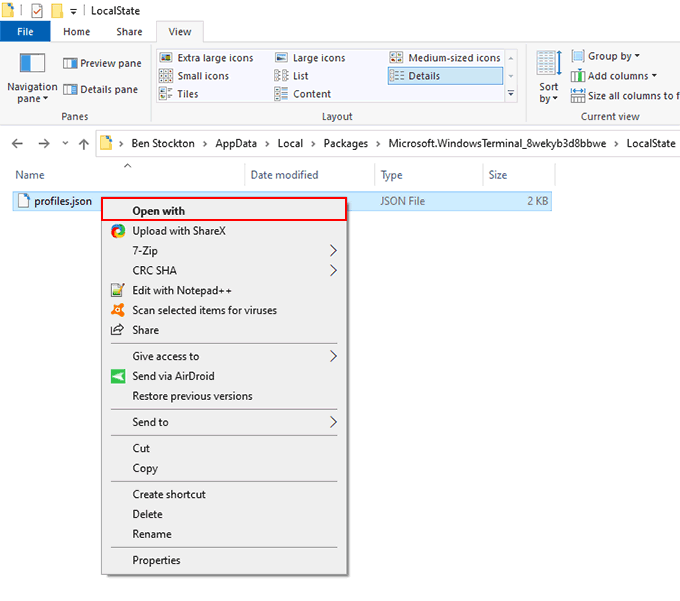
- In the app pick card, click More apps, then click Await for some other app on this PC.
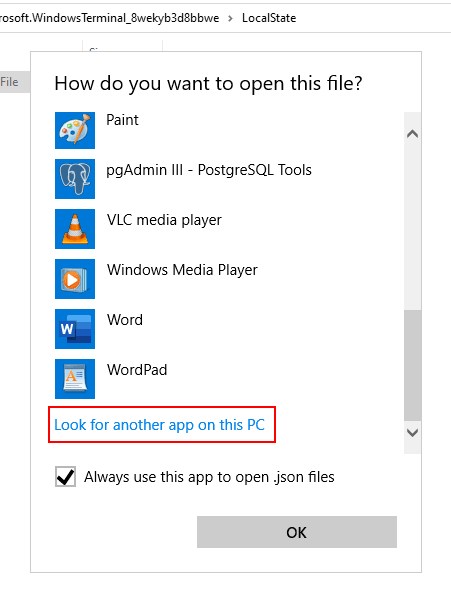
- In the app pick dialog box, head to the default installation location for Notepad++. For most users, this can be plant at C:\Program Files (x86)\Notepad++. Select Notepad++.exe and so click Open.
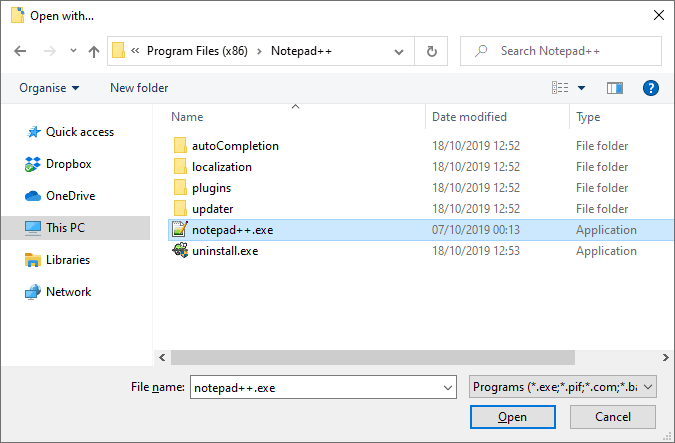
After this, the profiles.json configuration file will always open in Notepad++. Y'all tin begin customizing your Windows Terminal feel from here.
The Windows Terminal Configuration File
JSON files are a lilliputian complicated, but the profiles.json file is pretty like shooting fish in a barrel to work through. With Notepad++ at present configured to automatically open JSON files, yous tin access your settings file inside Windows Terminal at any point.
- To open the settings file, click the downward pointer button next to your Windows Terminal tabs, and so click Settings. This volition open the profiles.json file for you lot to edit.
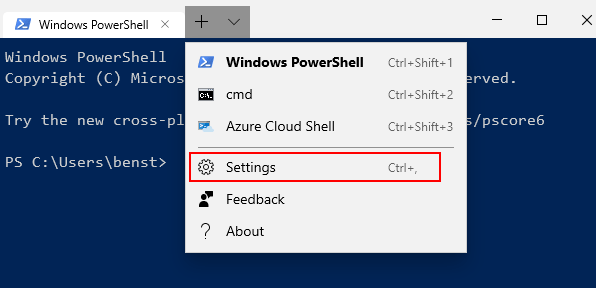
The JSON file has dissever "profiles" sections that allow you to edit the profiles for each type of app and terminal vanquish. If y'all wanted to alter how Windows Concluding looks in a PowerShell app, for example, wait for the PowerShell section. Utilise the "name" or "commandline" lines to find each contour.
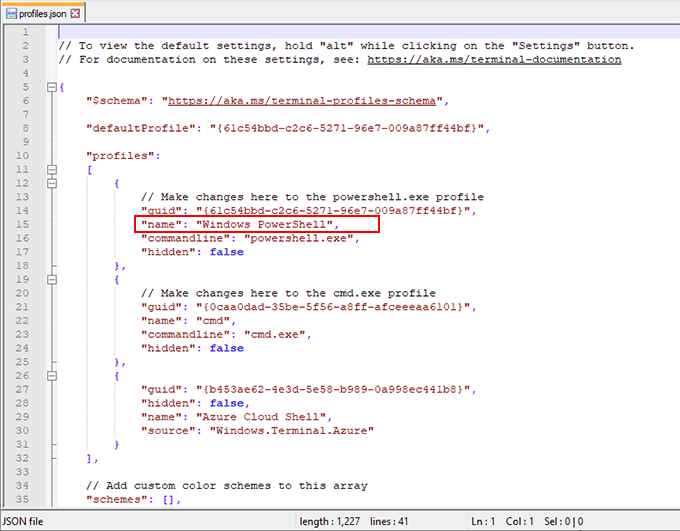
Adding Custom Windows Terminal Backgrounds
If you want to add a custom background, copy a suitable PNG, JPEG or GIF file to your settings folder showtime.
- Open your settings file and, nether each profile department, add the post-obit underneath the "commandline" line:
"backgroundImage" : "ms-appdata:///local/yourimagefile.jpg",
"backgroundImageOpacity" : 0.7,
"backgroundImageStrechMode" : "fill",
- Replace "yourimagefile.jpg" with the filename for your image, and press Ctrl + South to salvage later. You can also customize the "backgroundImageOpacity" and "backgroundImageStretchMode" settings to your ain requirements.
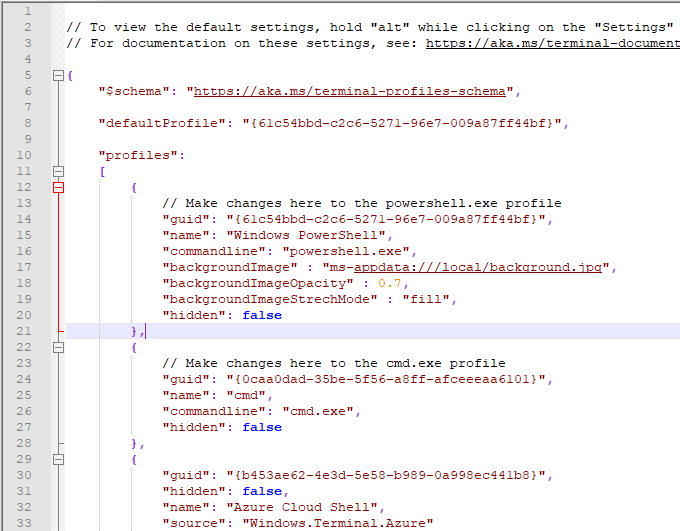
- Once saved, your Windows Concluding background will immediately change to lucifer the background image you've specified.
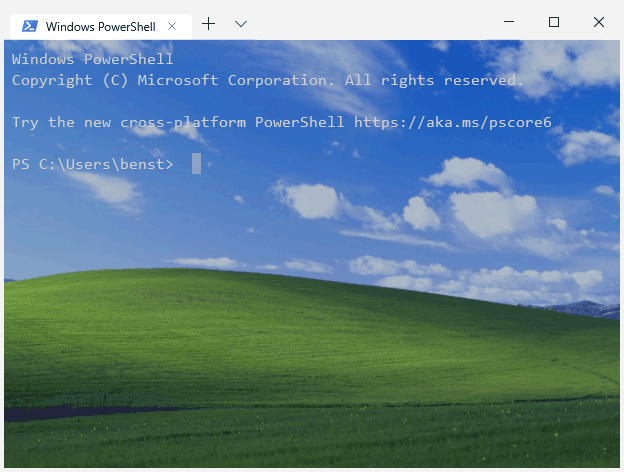
Irresolute The New Windows Terminal Colour Scheme
To allow y'all to quickly change your new Windows Terminal color scheme, you can use ane of five default themes. The method for changing this is similar to the method listed above to change your background.
- Commencement by opening your settings file and, under each profile section, add the following line:
"colorScheme" : "Campbell",
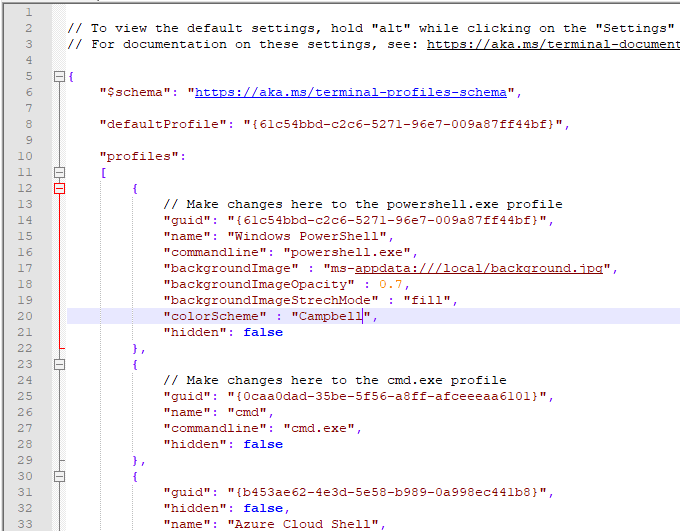
- Press Ctrl + Due south to save, and Windows Terminal will immediately update to show the new scheme.
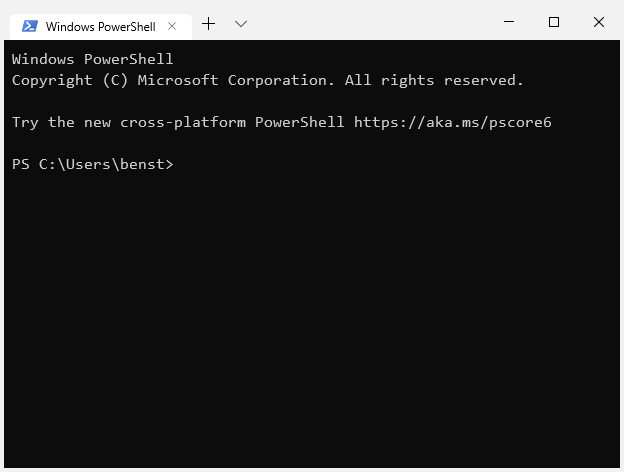
This volition change your color scheme for your chosen app profile to the "Campbell" colour scheme, a scheme originating from Microsoft Console Colortool. You tin can alter this to "I One-half Dark", "Ane One-half Light", "Solarized Dark" or "Solarized Light" as an alternative.
For more data on the Windows Terminal configuration file, have a look at the documentation file available at the Github repository.
Practise non share my Personal Information.
Source: https://helpdeskgeek.com/windows-10/how-to-install-use-the-new-windows-10-terminal/
Posted by: castillofille1973.blogspot.com

0 Response to "How To Run Terminal On Windows 10"
Post a Comment